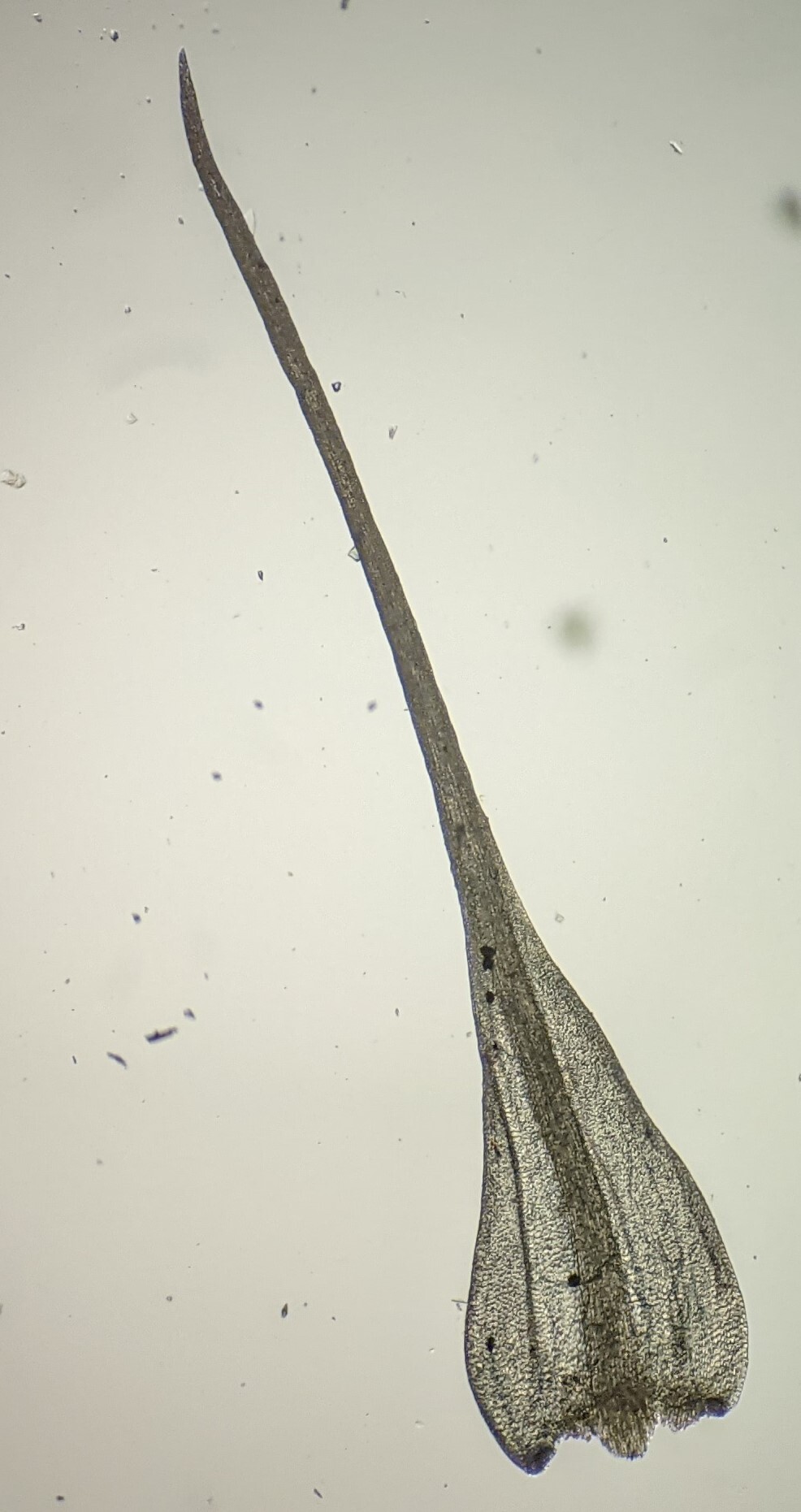Echinodiopsis
Dioicous. Tufts or mats on rocks, soil, roots and trunks or rarely logs, sometimes aquatic. Stems differentiated into a short creeping primary stem without leaves or with eroded leaves and secondary stems with few to several irregularly pinnate branches, with rhizoids confined to near base, sometimes with flagellate branches bearing smaller leaves; pseudoparaphyllia foliose; central strand absent or indistinct. Leaves on branches and stems similar except branch leaves smaller, lanceolate or subulate from a triangular or ovate base, erect- to wide-spreading when wet, erect and somewhat falcate or crisped (not in Victoria) when dry, mostly plicate; costa percurrent (not in Victoria) or excurrent; margin entire or denticulate to serrate, plane to slightly recurved, partly or entirely bistratose; laminal cells elliptic or quadrate to oblong, becoming rectangular or linear at insertion, bistratose along plications, and toward apex, often multistratose near costa at base, smooth, mamillose (not in Victoria) or papillose (not in Victoria); alar cells not differentiated. Capsule inclined to pendent, ellipsoid, ovoid or subglobose, with a revoluble annulus. Calyptra cucullate, smooth. Operculum rostellate. Peristome double; endostome segments slightly shorter than exostome, with a high basal membrane; cilia present.
Two species, one in New Zealand and Lord Howe Island and the other in New Zealand, Auckland and Campbell Islands, New Caledonia and eastern Australia.
Echinodiopsis was previously included in Echinodium (see Neckeraceae profile).
 Spinning
Spinning